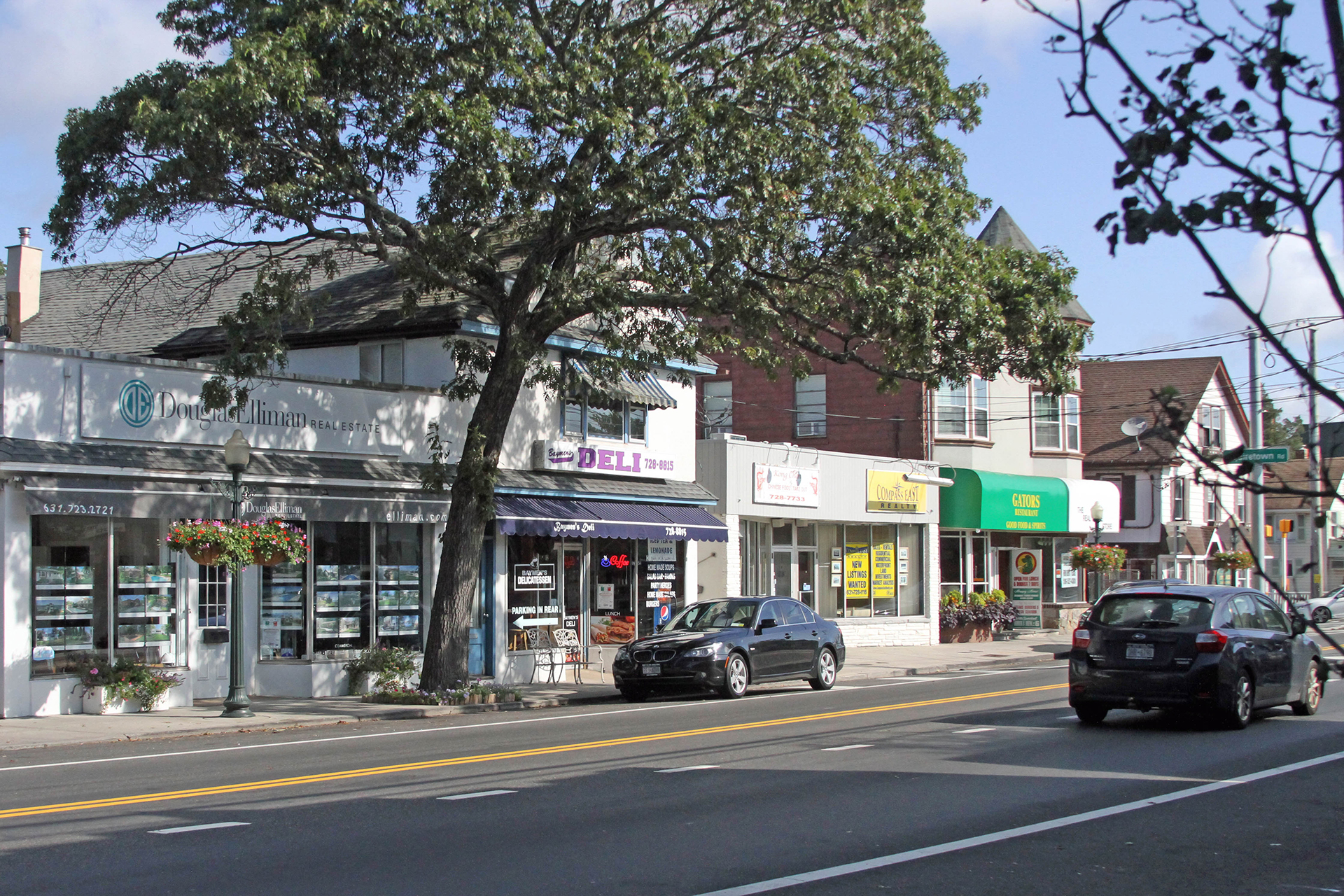Hampton Bays Overlay District Approved

The Hampton Bays Downtown Overlay District has been approved.
The unanimous vote February 25 follows four years of planning, many public meetings, and the creation of the pattern book that will guide the architectural styles and materials and sustainable landscape designs with future development. Southampton Town Board members are hoping the resolution paves the way for the revitalization of the downtown area while retaining local character.
“Hampton Bays downtown is being built out according to zoning established in 1972 that’s not getting residents what they want,” Supervisor Jay Schneiderman said. “It’s bringing on strip-mall-types of development. To me, they’re completely in danger of losing their downtown character.”
The move follows New York State Environmental Quality Review Act guidelines and a supplemental generic environmental impact statement was done. The overlay district and its design details incorporate the wants and needs of residents. A previous version was also recently modified to account for recent reactive comments toward some of the original language.
“We don’t want decay and disinvestment,” Town Planning and Development Administrator Janice Scherer said. “We want reinvestment, reinvigoration, walkability, and all of the design standards and everything that the community said they wanted. This is a revitalization plan. We have a 38-acre park in the middle of downtown that’s amazing. We have a huge area between Main Street and that park that we want to activate.”
The new overlay district encompasses 54.8 acres from Ponquogue Avenue to Springville Road extending south to Good Ground Road and north to Good Ground Park.
Councilwoman Julie Lofstad, a Hampton Bays resident, believes the revised downtown plans have addressed all community concerns. One involved the elimination of any possibility of an assisted living facility within the area. Another concern addressed water contamination. The town recently received a $50,000 grant from the New York State Environmental Facilities Corporation to help fund that next step. It includes an engineering report for a sewage treatment plant.
“Hampton Bays has an abundance of natural resources, but every downtown needs a balance, and I don’t think we quite have the right balance,” Lofstad said. “I think this plan is only going to add to what we have. I love my downtown, but every downtown needs a boost, and I think that’s what this will do.”
Councilman Rick Martel, who owns Skidmore’s Sports & Styles, located within the downtown overlay district’s boundaries, recused himself from voting on the matter.
“While the parcel I own is one of 92 other parcels within the proposed overlay district, and while I have no current or future plans to sell or develop a parcel as would be permitted under the overlay district standards, I have decided to recuse myself from the vote on this proposal in order to avoid any possible appearance of conflict or impropriety,” he said.
Councilman John Bouvier liked the flexibility of the additional zoning option, and its ability to evolve over time. Councilman Tommy John Schiavoni called the plan “the way of the future.”
The overlay district Schneiderman is hoping more people take advantage of also received Suffolk County Planning Department approval. He applauded the town’s planning department for taking the time to work with the Hampton Bays community in developing a vision for its downtown’s future and for helping enact a legislative framework for realizing that vision.
“The overlay district codifies the desired forms of future development that we arrived at through an extensive community participation process,” Scherer said. “We are so excited to see sustainable and beautiful redevelopment within the hamlet center that will complement the park and provide new uses and experiences that the community desires. This is smart growth at its finest.”
desiree@indyeastend.com



